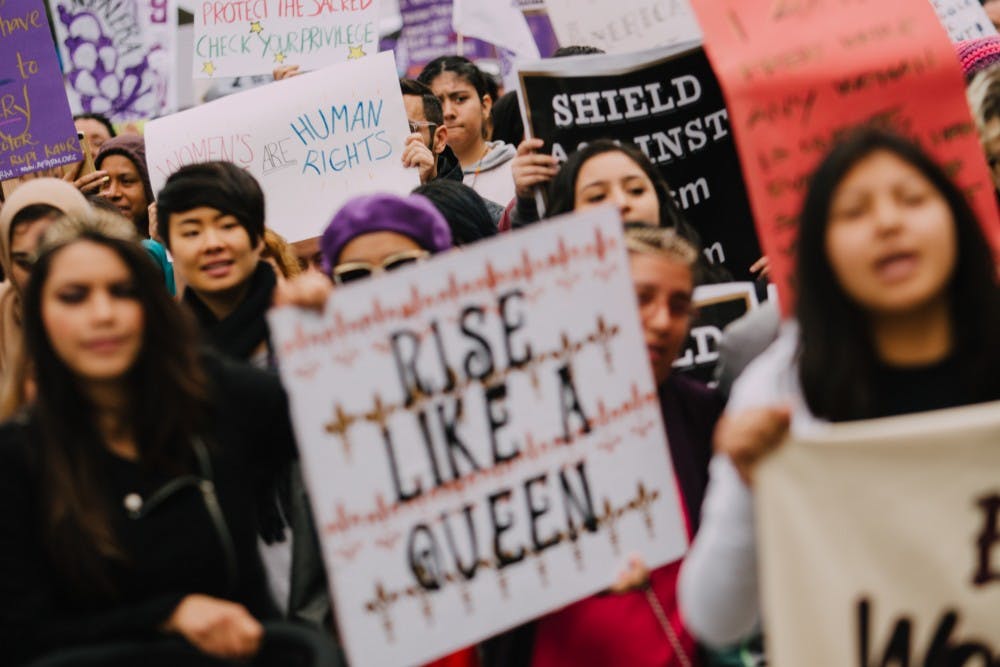
This Thursday, I’m sure that many of you will be getting ready for the weekend as usual. But many of you will also likely be getting ready for a different type of day — International Women’s Day. Several groups across campus and Baltimore have been preparing to commemorate the event. But I’ll be honest, I’ve never heard of International Women’s Day before.
Yet it sounds like an annual event that nearly everyone can get behind. Curious, I decided to find out exactly what this day is about, and now I’m just surprised that I’d never come across it before.
Here are the questions — and answers, helpfully provided by the internet — that I found more pressing than the questions my professors had assigned this week:
What is International Women’s Day?
According to the official website, International Women’s Day is meant to celebrate the various achievements of women across the world in cultural, political and social matters. It is also supposed to promote and increase awareness of the need for gender equality. It has been celebrated worldwide for over 100 years.
The day is seen as a combination of celebration and advocacy. In most places, it is not just a day for women to celebrate, but it is a time to highlight the accomplishments of women in particular. How the day is observed depends on each country’s specific needs and goals for women; there is no one blueprint for the day.
Why was International Women’s Day started?
Fifteen thousand women marched through New York City in 1908, demanding better wages and working hours for their jobs, as well as voting rights. The next year, the Socialist Party of America introduced the first National Women’s Day, under the leadership of Theresa Malkiel and Aira Salazar. In 1910, the day was commemorated once again.
Meanwhile, another Socialist organization, the International Socialist Women’s Conference, had held its first meeting a few years before. At the second meeting, in Copenhagen in 1910, Clara Zetkin of Germany suggested that there be an international day for women, held at the same time throughout multiple countries, that would strongly promote women’s suffrage.
The women representing 17 countries at the Conference agreed, and more countries began to celebrate the day with each passing year. In 1913, the date of the commemoration was set to be on March 8 internationally and has been celebrated on this date ever since.
Though International Women’s Day began with a focus mainly on women’s suffrage and the right to be elected to office, as the times have changed, so have the goals of each year’s celebration. The United Nations began officially celebrating the day in 1975. Since 1996, they have instituted a different theme for each year.
The UN theme for 2018 is “Time is Now: Rural and urban activists transforming women’s lives.” The International Women’s Day website lists a separate campaign theme. Under the title “#PressforProgress,” there is a primary focus on more justice-seeking movements like #MeToo and #TimesUp.
Has International Women’s Day caused any actual change?
Yes and not just for women. In 1917, a demonstration was held in the Russian capital, then called Petrograd. Because it was International Women’s Day, the majority of those present were women.
The day began peacefully enough, with posters declaring that the demonstrators were patriotic but wanted many Russian policies (not just concerning women) to be changed.
However, in the afternoon, female textile workers joined the crowds and began chanting for “bread and peace.” Their forceful energy spread, and male workers began joining as well. The atmosphere became one of outright hostility to the status quo, and the crowd began chanting against the Czar.
By the end of the day, over 100,000 Russian workers were on strike. The Czar wound up abdicating four days later. Of the many factors that led up to the Russian Revolution, the actions of the women who were commemorating International Women’s Day played an important role.
How is International Women’s Day celebrated now?
Over 100 countries recognize the day in some way, with over 25 having made the day an official holiday. In some countries, such as Chile and Croatia, the day has morphed into a more lighthearted women’s appreciation day, with men giving women gifts. In others, such as Romania, the day is similar to Mother’s Day.
Several countries have even declared International Women’s Day a holiday for women only. Of all celebrations worldwide for this important day, these are the ones that I would be fascinated to see taking place.

















